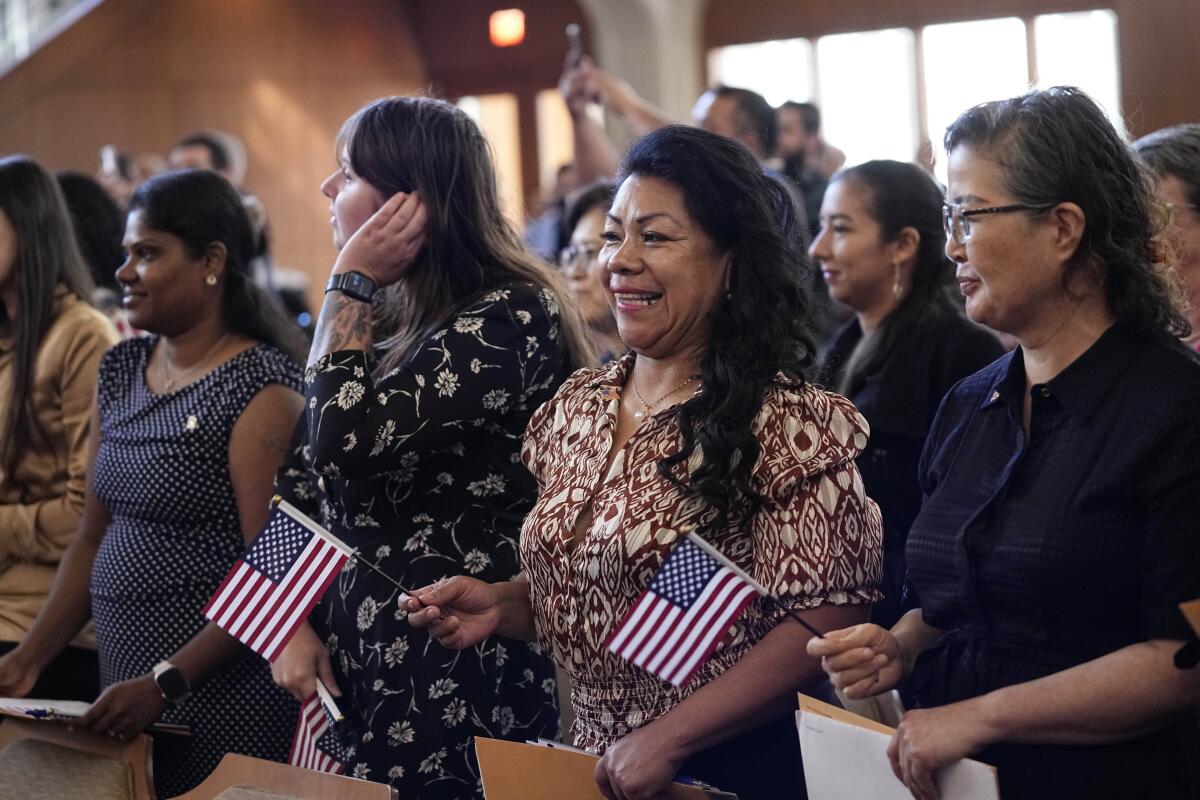More than half of foreign-born people in U.S. live in just 4 states and half are naturalized citizens

- Share via
ORLANDO, Fla. — More than half of the foreign-born population in the United States lives in just four states — California, Texas, Florida and New York — and their numbers grew older and more educated over the last dozen years, according to a new report released recently by the U.S. Census Bureau.
In 2022, the foreign-born population was estimated to be 46.2 million people, or almost 14% of the U.S. population, with most states seeing double-digit percentage increases in the last dozen years, according to the figures from the bureau’s American Community Survey.
In California, New Jersey, New York and Florida, foreign-born individuals constituted more than 20% of each state’s population. They made up 1.8% of West Virginia’s population, the smallest rate in the U.S.
Half of the foreign-born residents in the U.S. were from Latin America, although their composition has shifted in the last dozen years, with those from Mexico dropping by about 1 million people and those from Central and South America increasing by 2.1 million.
The share of the foreign population from Asia went from more than a quarter to less than a third during that time, while the share of African-born went from 4% to 6%.
The report was released as immigration has become a top issue in the 2024 presidential campaign, with the Biden administration grappling with an unprecedented influx of migrants at the southwestern border.
Immigration is shaping the 2024 elections in a way that could determine control of Congress as Democrats try to outflank Republicans and convince voters they can better address problems at the border.
The Census Bureau report didn’t provide estimates on the number of people in the U.S. illegally.
However, the figures show that more than half of the foreign-born are naturalized citizens, with European-born and Asian-born people leading the way with naturalization rates at around two-thirds of their numbers. Around two-thirds of the foreign-born population came to the U.S. before 2010.
The foreign-born population has grown older in the last dozen years, a reflection of some members’ longevity in the U.S., with the median age increasing five years to 46.7 years.
It also became more educated from 2010 to 2022, with the rate of foreign-born people holding at least a high school degree going from about two-thirds to three-quarters of the population.
Schneider writes for the Associated Press.
More to Read
Sign up for Essential California
The most important California stories and recommendations in your inbox every morning.
You may occasionally receive promotional content from the Los Angeles Times.










